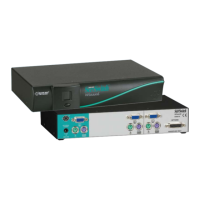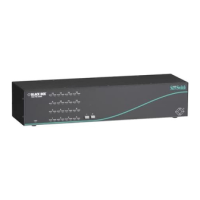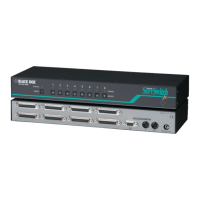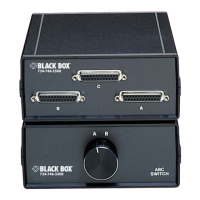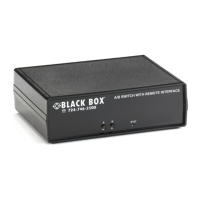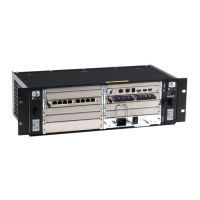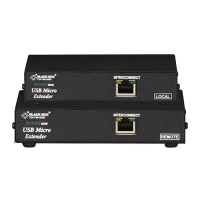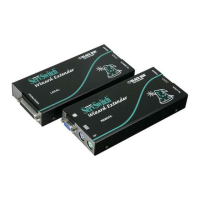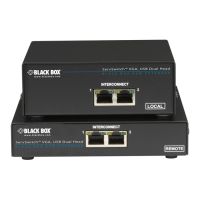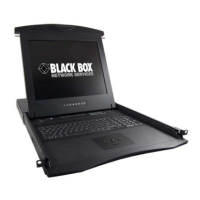TROUBLESHOOTING
123
10.2 USB HID
10.2.1.1 USB Keyboard/Mouse
Your USB-keyboard/USB-mouse does not work
Although we tried to design the devices as transparent as possible, we can’t ensure
that all devices are running. Please check Appendix F: List of supported USB
devices, on page 140.
Your USB Mouse makes ”jerky leaps”
With high monitor resolutions, the data volume that can be transferred may exceed
the available bandwidth, so the data throughput must be reduced. For this, the
device uses a RLE compression algorithm. If the necessary compression factor is
not reached, not all pictures of the graphic card are transferred (frame dropping)
and the mouse may make jerky leaps.
Hint: Use a lower resolution or a background which can be compressed better:
Please avoid photo-backgrounds or colour gradient – single-coloured backgrounds
are optimal and permit highest possible compression rates and highest frame rates.
Your USB Mouse moves like its on “elastic”
This problem is caused by several factors which lead to a time delay between
mouse movement and display on the screen. Contributions to the total delay consist
of (numerical data are approx. values):
Mouse movement/ transmission of data to the CPU (5 – 15 ms)
Processing time in the CPU until mouse movement at the graphic output
appears (50 – 70 ms)
Transmission of the graphic data into the extender-system and
transmission to the Remote Unit (15 – 45 ms)
Processing time in the graphical output device (15 – 100 ms, where 15 ms
are only reached with CRT tubes)
The DKMity of the delay, between 85 and 230 ms, is not a consequence of the
extender system. The extender system is responsible for 5 -15 ms mouse
movement/ transmission to the CPU plus 15 – 45 ms acquiring the graphic data and
transmitting it to the Remote Unit. Our measurements show that time delays greater
than about 100-150 ms become noticeable and bothering. Therefore, if an extender-
system increases the mouse signal delay from, say, 100ms to 140ms you may begin
to experience the “elastic” delay problem.
If you use a slow response TFT screen you may already have a total response time
of up to 175 ms, right at the threshold level. The addition of an extender line to such
a system will appear to cause the “elastic” mouse delay problem even though the
extender system is responsible for only a small part of the total problem.
Hint: Use a display with a shorter response time (please note: the response time
indicated by the manufacturer is a measure of how quickly two successive pictures
can be displayed, not how long it takes for a signal from the input interface to reach
